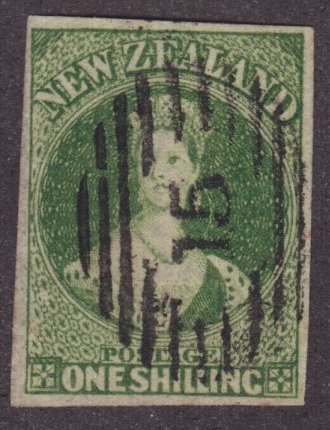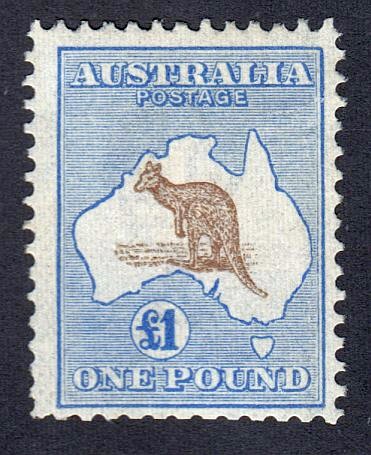
Discussion - Member to Member Sales - Research Center

Discussion - Member to Member Sales - Research Center

The area along the Sudetes belonged to Austria as the outskirts of Bohemia before it became part of Czechoslovakia in 1918. By the Munich Agreement of September 29th and 30th, 1938, the approval of the annexation of the Sudetenland to Germany was poorly spoken. In the course of the Sudeten crisis, Czech troops evacuated some German-speaking areas before the Munich Agreement was signed. The Sudeten German Party then began to issue its own postage stamps in the Asch and Rumburg areas as early as September 21, 1938.

On October 1, 1938, the Sudetenland was ceded by Czechoslovakia to the German Reich. Until the arrival of the German postage stamps, some of the stamps of Czechoslovakia were used unchanged, some of them were imprinted by the Sudeten German Party and sold at the post office counters. The use of the stamps of Czechoslovakia with and without imprint ended according to the circular of the OPD Dresden on October 20, 1938 at the latest. After that only stamps of the German Post were valid for postage.
There are only seven editions authorized by the Sudeten German Party. The overprints were made in a hurry, but this was done very carefully. Any special features that occur, such as mixed up printing colors or types, upside-down or upside-down printing, are very rare.
The stamps overprinted in many other cities and places apart from the issues cataloged here only show so-called "Sudeten German memory overprints" and are not to be regarded as post office issues. Special "liberation cancellations" were also used.
Devaluations
The following types of stamps were used in the transition period:
• unchanged postmark of Czechoslovakia,
• stamp with removed Czech inscription,
• old Austrian postmarks,
• Temporary stamp (mostly one-line place name),
• Special stamps (mostly rubber stamps), at least always with the additions; they were drafted by the Reichspanel in early November 1938.
Postage and newspaper stamps were used as common postage stamps.
Receipts that have actually run and are franked correctly are very rare in the Sudetenland issues (collector's price -, -). With the exception of Rumburg, the letter prices apply to collector or sentence letters or to over-franked receipts.
There are both imprint and stamp forgeries from all editions. We strongly recommend (BPP) testing of all more expensive brands!
Postage
The domestic charges of the German Reich were applied, converted according to the currency ratio of 10: 1 (10 H = 1 Pf, 1 Kc until 10.10.1938 10 Pf), then 12 Pf.

5 Members
like this post.
Login to Like.
I DO NOT OWN MUCH OF THESE STAMPS BECAUSE THE PRIZES ARE VERY VERY HIGH.
BUT THE ONES I HAVE ARE SHOWN BELOW.
Asch
Asch is located in the so-called "Ascher Zipfel" between the Fichtel and Ore Mountains, only a few kilometers from the Bavarian border.
The Czech authorities had already left the area on September 21, 1938 and the Sudeten German Party took over state power

ASCH 1-5
Karlsbad
Karlovy Vary lies between the Kaiserwald and Duppau Mountains at the confluence of the Teplá and the Eger and was the most important health resort in the Egerland
Since after the first issue of the own stamps on October 1, 1938, the post office was again in Czech possession from around 5:30 p.m. to October 3, 1938, first cancellations (EST) from October 1. very popular (on October 1st, not all brands were available).

KARLSBAD 10-15

KARLSBAD 28-29

KARLSBAD 30-38
Konstantinsbad
The spa town of Konstantinsbad is located in Bädendrieeck in West Bohemia, in the middle of forests around Pilsen. The postal administration also organized the postal system for the places Girsch, Neumarkt, Plau (with Marienbad), Tschihana, Weseritz and Zebau.

KONSTANTINSBAD 29
Niklasdorf
Niklasdorf is only about 10 km away from the former German border in Moravian-Silesia and was fought over during the Sudeten crisis.
From 22-09-1938 to 27-09-1938, the post office changed hands several times between Czechs and Freikorpsmen of the Sudenten German party.

NIKLASDORF 53
Reichenburg and Maffersdorf
The industrial cities of Reichenberg and Maffersdorf (today Liberec and Vratislavice nad Nisou) are located in the northern German-born Sudeten area, near the borders with Germany and Poland.
Similar but distinguishable hand stamps were used at the two post offices.
The main distinguishing features are the position and shape of the call sign and the color of the print.

REICHENBURG 21-24

REICHENBURG 45B

MATTERSDORF 21

MATTERSDORF 40
Rumburg
The town of Rumburg (Rumburk) is located on the Mandau in northern Czech Republic, near the German border.
The district of Rumburg (the so-called North Bohemian Netherlands) consisted of around 50 places, 42 of which had their own post offices. The main and distribution post office was Rumburg.
The area was cleared by the Czech administration on September 21-22, 1938.

RUMBURG 1-17

RUMBURG 21-23

RUMBURG 25

RUMBURG 36-43

RUMBURG 49-52
Sudetendeutsches Niederland
The Sudetendeutsches Niederland is the most protruding part of the country towards Saxony and is a mountainous region made of granite rock with no natural resources. It is located in southern Lusatia between the Elbe and Spree. The poorly productive agriculture gave rise to so-called industrial villages with small businesses. The textile and clothing industry, wood processing companies, construction and plastic flower production emerged.

IA-IIIA

IB-IIIB

7 Members
like this post.
Login to Like.

Local government editions; Original stamps of Czechoslovakia with overprints
The area along the Sudetes belonged to Austria as the outskirts of Bohemia before it became part of Czechoslovakia in 1918. By the Munich Agreement of September 29th and 30th, 1938, the approval of the annexation of the Sudetenland to Germany was poorly spoken. In the course of the Sudeten crisis, Czech troops evacuated some German-speaking areas before the Munich Agreement was signed. The Sudeten German Party then began to issue its own postage stamps in the Asch and Rumburg areas as early as September 21, 1938.

On October 1, 1938, the Sudetenland was ceded by Czechoslovakia to the German Reich. Until the arrival of the German postage stamps, some of the stamps of Czechoslovakia were used unchanged, some of them were imprinted by the Sudeten German Party and sold at the post office counters. The use of the stamps of Czechoslovakia with and without imprint ended according to the circular of the OPD Dresden on October 20, 1938 at the latest. After that only stamps of the German Post were valid for postage.
There are only seven editions authorized by the Sudeten German Party. The overprints were made in a hurry, but this was done very carefully. Any special features that occur, such as mixed up printing colors or types, upside-down or upside-down printing, are very rare.
The stamps overprinted in many other cities and places apart from the issues cataloged here only show so-called "Sudeten German memory overprints" and are not to be regarded as post office issues. Special "liberation cancellations" were also used.
Devaluations
The following types of stamps were used in the transition period:
• unchanged postmark of Czechoslovakia,
• stamp with removed Czech inscription,
• old Austrian postmarks,
• Temporary stamp (mostly one-line place name),
• Special stamps (mostly rubber stamps), at least always with the additions; they were drafted by the Reichspanel in early November 1938.
Postage and newspaper stamps were used as common postage stamps.
Receipts that have actually run and are franked correctly are very rare in the Sudetenland issues (collector's price -, -). With the exception of Rumburg, the letter prices apply to collector or sentence letters or to over-franked receipts.
There are both imprint and stamp forgeries from all editions. We strongly recommend (BPP) testing of all more expensive brands!
Postage
The domestic charges of the German Reich were applied, converted according to the currency ratio of 10: 1 (10 H = 1 Pf, 1 Kc until 10.10.1938 10 Pf), then 12 Pf.

5 Members
like this post.
Login to Like.

re: Sudetenland
I DO NOT OWN MUCH OF THESE STAMPS BECAUSE THE PRIZES ARE VERY VERY HIGH.
BUT THE ONES I HAVE ARE SHOWN BELOW.
Asch
Asch is located in the so-called "Ascher Zipfel" between the Fichtel and Ore Mountains, only a few kilometers from the Bavarian border.
The Czech authorities had already left the area on September 21, 1938 and the Sudeten German Party took over state power

ASCH 1-5
Karlsbad
Karlovy Vary lies between the Kaiserwald and Duppau Mountains at the confluence of the Teplá and the Eger and was the most important health resort in the Egerland
Since after the first issue of the own stamps on October 1, 1938, the post office was again in Czech possession from around 5:30 p.m. to October 3, 1938, first cancellations (EST) from October 1. very popular (on October 1st, not all brands were available).

KARLSBAD 10-15

KARLSBAD 28-29

KARLSBAD 30-38
Konstantinsbad
The spa town of Konstantinsbad is located in Bädendrieeck in West Bohemia, in the middle of forests around Pilsen. The postal administration also organized the postal system for the places Girsch, Neumarkt, Plau (with Marienbad), Tschihana, Weseritz and Zebau.

KONSTANTINSBAD 29
Niklasdorf
Niklasdorf is only about 10 km away from the former German border in Moravian-Silesia and was fought over during the Sudeten crisis.
From 22-09-1938 to 27-09-1938, the post office changed hands several times between Czechs and Freikorpsmen of the Sudenten German party.

NIKLASDORF 53
Reichenburg and Maffersdorf
The industrial cities of Reichenberg and Maffersdorf (today Liberec and Vratislavice nad Nisou) are located in the northern German-born Sudeten area, near the borders with Germany and Poland.
Similar but distinguishable hand stamps were used at the two post offices.
The main distinguishing features are the position and shape of the call sign and the color of the print.

REICHENBURG 21-24

REICHENBURG 45B

MATTERSDORF 21

MATTERSDORF 40
Rumburg
The town of Rumburg (Rumburk) is located on the Mandau in northern Czech Republic, near the German border.
The district of Rumburg (the so-called North Bohemian Netherlands) consisted of around 50 places, 42 of which had their own post offices. The main and distribution post office was Rumburg.
The area was cleared by the Czech administration on September 21-22, 1938.

RUMBURG 1-17

RUMBURG 21-23

RUMBURG 25

RUMBURG 36-43

RUMBURG 49-52
Sudetendeutsches Niederland
The Sudetendeutsches Niederland is the most protruding part of the country towards Saxony and is a mountainous region made of granite rock with no natural resources. It is located in southern Lusatia between the Elbe and Spree. The poorly productive agriculture gave rise to so-called industrial villages with small businesses. The textile and clothing industry, wood processing companies, construction and plastic flower production emerged.

IA-IIIA

IB-IIIB

7 Members
like this post.
Login to Like.

